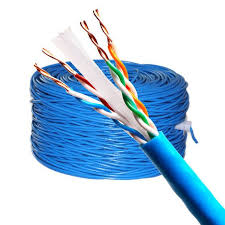Installing CAT5 cablescorrectly is crucial to ensure a secure and high-performance network. CAT5 cables, often used for Ethernet networking, were designed to enable speeds of data transmission up to 100 Mbps, and are suitable for many networking tasks. Here’s a guide to properly installing CAT5 cables to achieve optimal performance of your network.
Plan Your Installation: Start by determining the route of your cable. Look for the shortest distance between devices to limit cable length and potential signal loss. Do not run cables near areas of electromagnetic interference like electrical cables or fluorescent lights that can affect performance.
Select the right cable Make sure you are using high-quality CAT5 cables that meet the standards of the industry. Examine the specifications of the cable to confirm it supports your desired data rates and performance of your network. For outdoor installations or environments susceptible to interference, think about using CAT5e or other higher-rated cables.
Prepare the Cables Before making the CAT5 cables, strip the outer insulation, carefully exposing the twisted pairs within. Be careful not to damage the wires. Twist each wire just enough to make the connections, and keep them twisted as long as you can to maintain the integrity of the signal.
Use Proper Connectors: Utilize connectors that are compatible with CAT5, such as RJ-45 connectors, for the network connection. Ensure that the connectors are properly crimped to the cables with a reputable Crimping tool. Follow your T568A as well as T568B wiring standards for consistent pinouts, which ensures compatibility with other devices on the network.
Test Your Connections: After installation check each connection with an electronic network cable tester to ensure that all pins are correctly connected and that there are no shorts or open circuits. This is essential for ensuring that your network will perform consistently.
Following these steps, you will ensure that you’re CAT5e cables are correctly installed to ensure a secure and reliable network connectivity. A properly installed installation prevents signal interference and maximizes data transmission efficiency, contributing to a reliable and efficient networking environment.


